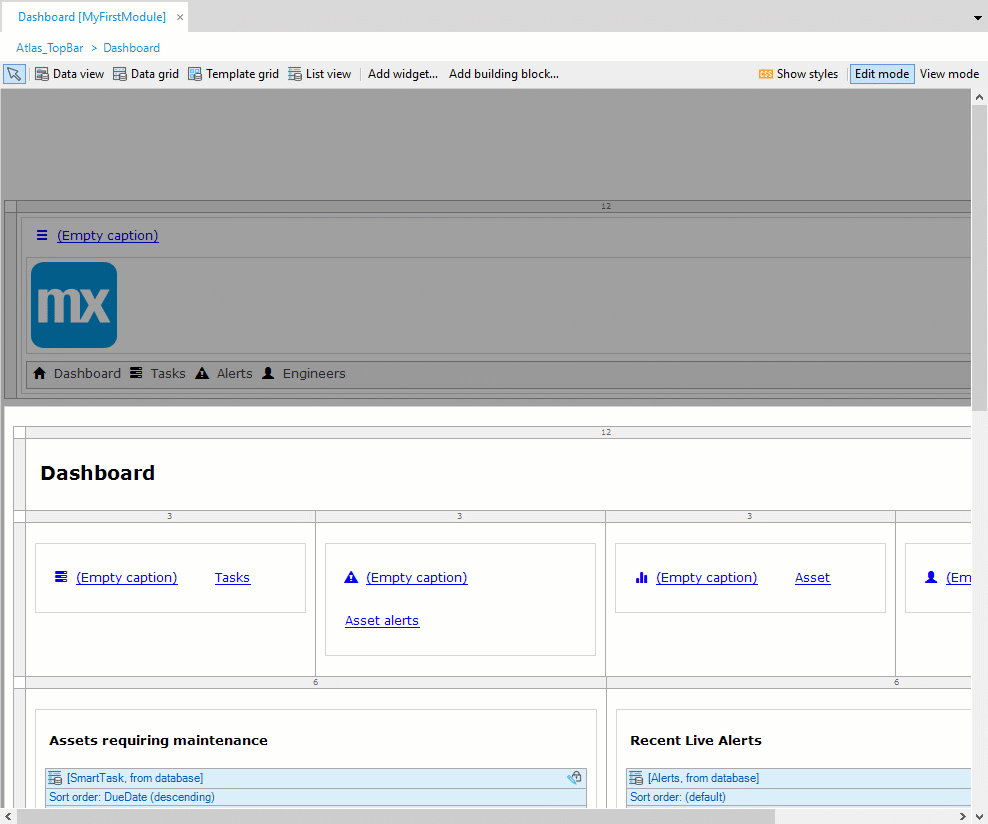With 88 percent of companies adopting low-code as a standard for developing applications and 74 percent of those companies planning to integrate business lines into the application development lifecycle, it is clear that companies are embracing this technology to relieve the pressure in application demand. And now your boss has told you that low-code development is the new way, and you need to break the news to your team.
Some of your existing developers may be skeptical about low-code, saying things like, “low-code is beneath my skill set”, “I’ve tried this before and it doesn’t work, I always end up coding anyway”, or “I can code faster than this.” What they often don’t realize is that low-code development makes their lives easier and aids them in achieving what they’ve always wanted, to make an impact on their organization in a fundamental way. This is the goal, right? So how can you get developers to buy into using a low-code platform?
4 Reasons Why Low-Code is the Shortest Path for Developers to Make an Impact
Convincing your developers that low-code actually lets them code more can be an uphill battle. When considering low-code platforms to increase productivity and solve business problems with efficiency, consider the four pillars of low-code platforms.
1. Visual and Intuitive
Low-code platforms provide the ability for developers to have a fixed layout and to preview that layout in a format where they can see how it will be deployed.

Low-code development platforms use a visual modeling approach to program logic. The example below displays a simple IF statement in code on the left and low-code on the right. The logic returns a true or false validation based on the supplied parameter. Developers understand both sides because they understand the coding and the visual model. It’s a no-brainer for them. But with the increased necessity to interact with the business, it gets complicated to explain the code to a business person. With code, developers need to not only provide an explanation of why they code the way they do, but also a translation of the code.

Visual models are a common language developers can use to explain their decisions to stakeholders, ensuring alignment faster than traditional code reviews.
It comes down to asking your developers: Would you rather have to deal with the aggravation and hassle of trying to explain the code to someone who doesn’t get it, or spend time explaining the logic around the decision you made in a way they easily understand?
2. Handles the Plumbing
The right low-code platform will provide cloud-native, one-click deployment. At Mendix, we talk about how great it is to be able to deploy with just one-click, and while it is amazing, let’s pull back the curtain and look into what is actually happening. When you one-click deploy, the app is placed in a container and shipped off to any public or private cloud environment. Your developers don’t need to worry about standing up an environment or installing any of the plumbing, and if they do want to stand up an environment, they need only do it once.

By eliminating the need to build the plumbing every time your developers start a project or waiting two weeks for the infrastructure team to build it out, they can now focus the time saved on solving the problem the app is being built for.
The right low-code platform automatically integrates logging, debugging and tracing into the projects because they are built into the platform. This eliminates the need to spend time evaluating different technologies for troubleshooting code every time a new project is started.
From the Mouth of a Skeptic
Russell Martin, Senior Software Engineer at Erie Insurance, has been in IT for over 15 years now and received his Bachelor’s degree in Management Information Systems (MIS). He is now a low-code developer, and when asked what his initial reaction to low-code was, he shared:
“I have to admit, when I first saw the Mendix low-code platform I called BS based on all of my previous experience as a developer. I didn’t think this type of low-code development could meet our needs. As we worked with many proofs of concepts, I very quickly realized that Mendix actually fits all our needs. I was still pretty shocked, and while working with a small team of Mendix developers, I tried to trip them up with tons of questions thinking surely one of them would not be met with a sufficient answer. Every single question and need was met and I was hooked. We purchased a license and developed a single project to show what Mendix could do. Since then we have been flying with the platform.”
3. Extensible and Reusable
When developers want to extend an app with custom code, they normally have to figure out a way to integrate the logging, debugging and tracing that the core platform has into their custom code. When developing with a low-code platform, the encapsulated code is native and includes logging, debugging and tracing. This foundation is there for developers when they are building functionality native to the platform, as well as when they are extending the platform with custom code.
The right low-code platform is capable of being extended with custom code when necessary and shared through a platform app store, for example, to encourage reuse, quality, and consistency. A platform app store should provide a plethora of these custom, downloadable widgets and connectors, which are simply pieces of custom code that can be downloaded.
The custom code is wrapped and encapsulated, and within the encapsulation it becomes a native extension of the model and therefore inherits all of the logging, debugging and tracing functions that are already inherent to the platform. When you extend the platform, the custom code becomes reusable for other developers in a managed way. This process acts as a control mechanism and an opportunity to for quality and consistency as developers make these components available for other developers.

Becoming the right kind of subject matter expert
Another great benefit of reusable components and extensibility is the ability to leverage services from AWS and the like by simply dragging and dropping. Developers can spend months learning to integrate new technologies like machine learning, IoT, and blockchain, making sure it’s future proofed and easy for the rest of the team to integrate. It can be risky and time-consuming to ask developers to figure out the integration on their own.
Instead of spending the time on becoming an expert at the mechanics of how the tech works, the nuances of the code and implementation, and the integration involved, low-code platforms enable developers to easily leverage these technologies with greater accessibility and focus on being a subject matter expert on the best ways to use the technology with respect to use cases. This type of subject matter expert helps drive the business to understand the use case for the technology and provides higher value.
In other words, it’s about being able to explain the how versus the why. Low-code platforms take care of the how so your developers can focus on the why.
4. Collaborative
In order for developers to build apps that meet business and user expectations, it is imperative to use a platform that enables collaboration between business and IT, as well as collaboration between developers. This collaboration can come in the form of integrated chat, feedback, visual modeling tools, etc.
The right low-code platform will provide tools for collaboration in four key areas:
- A Collaboration Portal: Having a central place where everyone involved in the application development process, from business analysts to traditional developers, is a good place to begin evaluating the collaboration capabilities of a low-code platform. Features and functions like social feeds, comments, stories and feedback management that provide instant visibility and context into what is happening with the application can provide a deeper, shared understanding of the business goals and requirements.
- Within the Development Environments: The right low-code platform has an integrated development environment that fosters collaboration through integrated communication, and feedback and stories tied to the context of the specific application.
- A Mobile App for Testing: A mobile app for testing enables application validation and includes a social feed for users to be able to communicate feedback and make comments.
- Within the Apps Themselves: Each app built on the platform has a built-in feedback mechanism, so users who are interacting with the apps can supply feedback right to the development team in the development.

At the end of the day, you and your developers share the same goals: to solve problems efficiently, increase productivity and make an impact on the organization. The right low-code platform will enable your traditional developers to do just that.
